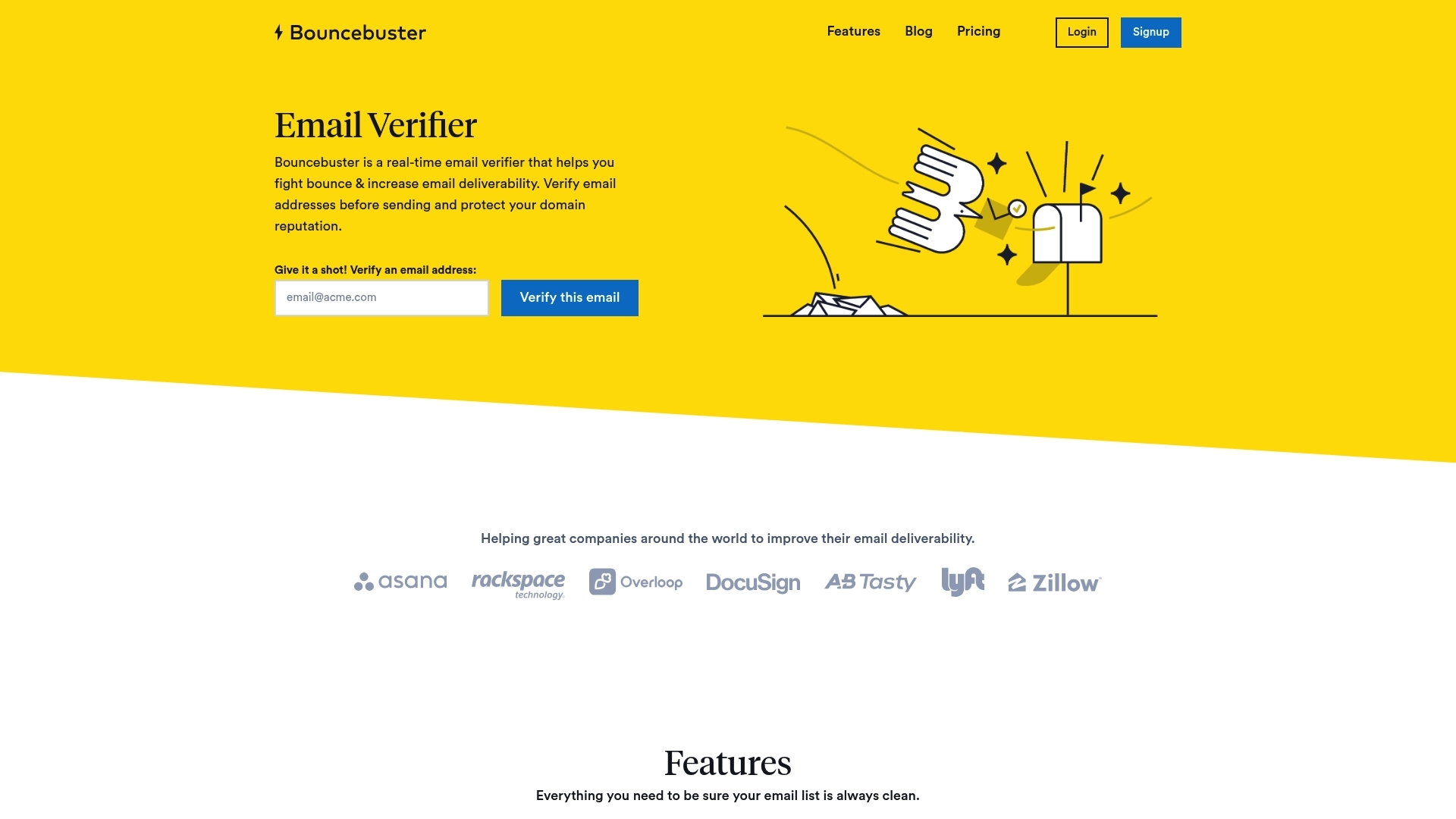Unlocking the Power of Email Verification API for Clean Business Email Lists in 2025
Every year, businesses rely on email to connect with customers, launch marketing campaigns, and strengthen relationships. Yet, as inboxes fill up and customer data ages, one challenge remains constant: unclean email lists lead to wasted resources, lost opportunities, and lower campaign results. Invalid or outdated addresses can result in emails bouncing back, sender reputation damage, and frustrated marketers struggling to reach real people.
This is where Email verification APIs come into play. These tools allow companies to automatically check and confirm the validity of every address in their lists, whether they manage thousands or millions of contacts. By automating the cleaning process, an API saves hours of manual checks and helps ensure every message lands where it should. Features like real-time verification, bulk processing, and smooth REST API integration have become must-haves for any business aiming to compete in 2025.
Solutions such as Bouncebuster not only reduce bounce rates, but also let teams focus on building better campaigns instead of cleaning up data. Efficient list management now directly ties into better marketing results and business growth, making it essential to get it right from the start.
What Is an Email Verification API?
With the digital marketplace more competitive than ever, accurate and responsive email lists shape the success of email marketing. At the center of this process, an email verification API helps businesses automate the validation of email addresses before sending campaigns. This software solution acts as a connective bridge, taking email data from your workflow and returning a quick assessment on whether each address is safe to use or at risk of causing hard bounces.
How Email Verification APIs Work
The core process follows a clear path:
- Input: A submitted email address or a batch of addresses.
- Validation: The API checks each address for syntax, MX records (mail server validation), domain existence, spam traps, and other risk indicators.
- Output: A status return (valid, invalid, risky) along with detailed information.
For businesses and developers, a REST API is the preferred connection method. REST APIs use HTTP protocols and simple requests for fast, consistent responses that easily slot into apps or CRMs. This enables companies to weave email list checks into signup forms, lead management pipelines, or campaign tools without friction.
Bulk Verification vs. Manual Checks
Email verification APIs often provide two main methods of validation to suit business needs:
| Bulk Verification | Manual Checks |
|---|---|
| Upload entire lists (thousands or millions of addresses). Suits list cleaning, re-engagement, or migration tasks. | Enter one email address at a time. Useful for urgent checks (high-value sign-ups, sales leads). |
| Automated and efficient for scaling operations. | Instant results on a case-by-case basis without uploading files. |
Platforms like Bouncebuster combine both methods, allowing their customers to verify single emails or large files within seconds. This flexibility removes manual bottlenecks and lets businesses handle everything from quick spot-checks to scheduled list maintenance at any scale.
Essential Features and Benefits for Modern Businesses
Smart email list management now depends on powerful API features that target today’s business needs. Reliable email verification APIs help prevent invalid or harmful addresses from disrupting marketing efforts or undermining campaign goals.
Key Features Modern Businesses Need
- Real-Time Validation: The ability to validate an email address the moment it’s entered helps block incorrect or non-existent addresses before they affect your lists. This immediate feedback is crucial for form signups, user registrations, and ensuring data quality stays high.
- Bulk Email Processing: For companies dealing with thousands or millions of contacts, APIs must offer simple bulk upload and verification for files like CSV or XLS. This feature is essential for onboarding new lists, handling CRM exports, and prepping lists for large campaigns.
- Speed and Scalability: Fast response times enable quick validation and processing, allowing teams to work efficiently. APIs must handle high volumes without lag, especially for businesses running multiple campaigns in parallel.
- Reliability and Consistency: Consistent uptime and accurate results build trust and ensure no emails are missed. The best tools provide robust uptime so marketers can keep campaigns on schedule.
- REST API Integration: Seamless compatibility with different tech stacks lets developers add verification steps anywhere in the marketing workflow, from web forms to CRM platforms.
Each of these features directly reduces bounce rates and improves deliverability. For example, Bouncebuster provides real-time and bulk verification options that let teams automate checks while minimizing manual work. For businesses prioritizing list health, these features strengthen sender reputation and help maximize the percentage of emails that land in inboxes, not spam folders. Learn more about maintaining sender reputation.
Common Use Cases: Solving Pain Points for Marketers and Businesses
Most businesses today handle email databases that can exceed tens of thousands or even millions of contacts. Without automation, the task of verifying each entry quickly becomes unmanageable, introducing errors and delays across marketing workflows. Whether launching a targeted newsletter, segmenting subscribers for personal campaigns, or preparing lists for seasonal promotions, keeping data accurate is essential.
Streamlining Newsletter and Campaign Delivery
Large businesses and marketing agencies must ensure newsletters reach real inboxes to avoid wasted effort and damaged sender reputation. Verification APIs let teams upload lists for swift validation before scheduling a campaign. This step alone can significantly restore deliverability rates and prevent bounce-backs that often occur when emails hit invalid addresses.
Segmenting and Maintaining Dynamic Contacts
Modern marketers demand precision when building personalized workflows or automating nurture sequences. List segmentation is only as effective as the underlying data quality. Regular API-powered checks help filter out outdated and fake entries, so segments reflect actual user engagement. With bounce detection and catch-all filtering, businesses remove risky addresses in real-time, improving list hygiene and letting CRMs sync only verified contacts.
Managing High-Volume Event-Driven Workloads
Before sending out mass announcements for product launches, sales, or public webinars, batch verification ensures campaigns do not trigger platform warnings or temporary blocks caused by invalid surges. By automating these checks through an API, marketers avoid time-consuming manual uploads and repeated human error.
Bouncebuster supports both bulk uploads and instant lookups so that businesses spend less time cleaning and more time reaching their customers. Teams can build safer list maintenance routines and scale outreach without slowing growth or dragging down campaign performance.
Spotlight: How Bouncebuster Empowers Businesses to Optimize Email List Management
Too many marketing teams lose momentum when they slow down to fix bounced emails or chase leads lost to outdated data. This remains a familiar frustration, especially for any business that works at scale. Duplicate subscriptions, typo-strewn addresses, and large, decaying lists drain resources that could drive actual growth. In practical terms, no campaign manager wants to see undelivered notifications instead of conversions. That is where integrated solutions like Bouncebuster matter.
Reducing Bounce Rates and Protecting Data Quality
Bouncebuster addresses major obstacles by validating email data both in bulk and on-demand, letting teams clear out invalid or risky addresses before they trigger deliverability problems. The REST API delivers results fast and fits into almost any tool stack, giving developers full control over how and when to verify addresses. Bulk upload support via CSV or XLS, combined with real-time validation through manual checks, helps businesses process lists of any size with minimal staff effort. Read our documentation for more technical details.
Cutting Manual Work and Supporting Scalable Campaigns
For campaigns that launch new leads daily, the difference is not just in improved open rates: it is in how few hours teams spend cleaning data themselves. The upcoming integration plans with major CRMs and platforms like Salesforce and Mailchimp aim to further cut the back-and-forth between apps. When lists stay accurate, marketers avoid wasted spend on undelivered messages and preserve their sender reputation more easily.
Bouncebuster’s core value lies in making email verification a quick, invisible step that lifts results and workflow efficiency. As more businesses automate their processes for 2025, removing friction from list maintenance is more than a nice-to-have: it directly shapes ROI and allows marketers to pivot from prevention to performance.
Impact on Campaign Performance and ROI
Using an email verification API transforms basic email marketing into a strategy grounded in data quality. When businesses send campaigns only to valid addresses, deliverability rates climb. High list accuracy means a larger share of messages reaches real inboxes, which protects sender reputation in the eyes of ISPs and email services. Strong deliverability directly correlates with campaign success metrics: higher open rates, more clicks, and increased conversions, all tied to a healthier email infrastructure.
Maximizing Deliverability and Reducing Waste
Unchecked lists contribute to bounce-backs, wasted send volumes, and can lead to blacklisting. Employing verification before campaigns launch removes this risk. Real-time API integration supports cleaning new signups as they arrive, which limits list decay. Campaigns run smoother and budgets stretch further because businesses pay for messages that actually reach people, not dead accounts. Explore pricing options for different usage levels.
Higher ROI and Sustained Engagement
Cleansed lists maintain engagement, ensuring that newsletters and promotional blasts land with customers who want to interact. This cycle of better results means marketing efforts fuel longer-term growth, not short-term spikes. Departments using tools like Bouncebuster report significant reductions in wasted sends and measurable gains in campaign response rates. As a result, teams get clearer insights from analytics, attributing lifts in open rates and customer action directly to list quality improvements.
Maintaining list hygiene with an API also helps protect brand reputation. Consistently sending to genuine contacts reduces the chance of landing in spam folders. Over time, inbox placement and sender trust increase, allowing marketing messages to drive their intended value instead of being lost or filtered out.
Best Practices for API Integration and List Hygiene
For developers and marketers working to ensure clean email lists and efficient marketing, integrating an email verification API demands more than a quick plug-and-play. Thoughtful setup and ongoing maintenance help prevent new errors and keep list quality high over time.
Streamline Integration Into Your Workflow
Start by documenting the current process from lead capture through list import to campaign launch. Identify where emails enter your system and insert verification points in real-time (signup, registration) or during bulk import (newsletter list uploads). Choose a REST API that fits your tech stack so integration does not disrupt existing tools or automation. Discover more about Bouncebuster’s features.
Follow API Best Practices
- Test requests with both valid and invalid email addresses during development so error-handling is solid.
- Use logging and analytics from your API platform to monitor verification rates and spot patterns like repeated invalid entries.
- Leverage bulk processing capabilities when onboarding or migrating lists. For real-time needs such as sign-up forms, call the API synchronously and validate before storing data.
When working with solutions like Bouncebuster, separate high-volume batch checks and instant verifications using different endpoints or scheduled jobs as appropriate. This cuts API request costs and lets you optimize performance for each use case.
Prioritize Privacy and Compliance
- Always encrypt API keys and credentials, and restrict their use by role or application.
- Comply with regulations like GDPR and CAN-SPAM by ensuring personal data is processed securely and only what is necessary is stored.
Routine hygiene matters just as much as initial setup. Build regular re-verification into your workflows to catch decaying addresses before they cause bounce issues. Monthly bulk verification cycles combined with automated checks for all new entries keep quality high and campaign disruptions low.
Future Trends: The Rise of Smart Integrations and Developer-First APIs
Email verification APIs have grown fast, but 2025 will push them further with smarter integrations and support for developers who demand flexibility. AI and automation will take a central role, changing how companies protect their lists and automate complex processes.
AI-Driven Verification Becomes Standard
Newer APIs use machine learning to go beyond basic pattern checks. By analyzing send patterns, user behavior, and global blacklist data, AI helps catch risky or evolving threats. For example, auto-detection of temporary domains, disposable addresses, and subtle typo patterns improves accuracy without manual review. Smart filtering reduces errors in bulk uploads and supports a cleaner data flow from web forms and signups.
Integration With Marketing Software and CRMs
The gap between email list management and marketing platforms will close as vendors release native API plug-ins. Many businesses expect real-time syncing with CRMs like Salesforce or marketing suite providers such as HubSpot and Mailchimp. These integrations allow lists to update live, limiting list decay and removing risky addresses before each campaign submission.
Developer-First Features and Seamless Workflows
- Modern REST architecture and transparent versioning
- Clear documentation and code samples
- Easy sandbox testing and robust support channels
Tools like Bouncebuster already stress these features, making the API simple to plug into custom apps or pipeline automation scripts. In 2025, businesses should expect APIs to offer even more customization, faster response times, and compatibility with the ever-changing landscape of sales, analytics, and marketing tools.
In summary, the next phase for email verification API is not just in dramatically faster processing or higher accuracy, but in becoming a true part of the entire customer engagement stack and supporting rapid developer innovation. Explore the latest trends on our blog.
Conclusion: Making the Smart Choice for Scalable Email Success
Email list management in 2025 is not about staying ahead just for the sake of trends. Businesses face direct pressure from obsolete lists that disrupt marketing budgets, campaign accuracy, and even sender reputation. As marketing continues to depend on automation and data-driven decisions, neglecting email verification limits how much a business can grow with each campaign cycle.
Scaling Efficiently Starts with List Quality
Every improvement to email list quality sets off a ripple effect: fewer bounces, improved sender trust with providers, and a higher chance that campaigns connect with real subscribers. Prioritizing verification also empowers teams to focus on creativity and strategy without the drag of tedious manual work.
A straightforward commitment to ongoing verification results in improvements that compounds over time:
- Reduced spend on undelivered emails
- Consistent engagement from verified users
- Protection against list decay destabilizing marketing automation
- Smoother integration with tools that rely on accurate data
Choosing Smart Solutions for Continuous Impact
The difference between a stagnant and a successful marketing operation lies in the practical systems put in place. Bouncebuster illustrates how automation, real-time checks, and bulk processing simplify what used to be overwhelming tasks. The right solution should fit directly into workflows, minimize hands-on time, and make compliance and privacy routine, not complex.
Top-performing teams build re-verification cycles into their regular operations. They do not treat list cleaning as a one-off fix but as an essential maintenance process. Adopting this mindset shifts email marketing from guesswork to reliability, where every campaign benefits from foundational list accuracy.
Platforms that offer dependable API access, bulk options, and the ability to smoothly fit into broader martech stacks make it easier for businesses to achieve target engagement at scale. When these solutions are integrated properly, marketing teams can operate with more confidence, and leadership can more accurately attribute resources and outcomes.
Businesses prepared to implement robust verification now will find fewer wasted campaigns, greater audience satisfaction, and sustained growth through smarter email practices in 2025 and beyond.




